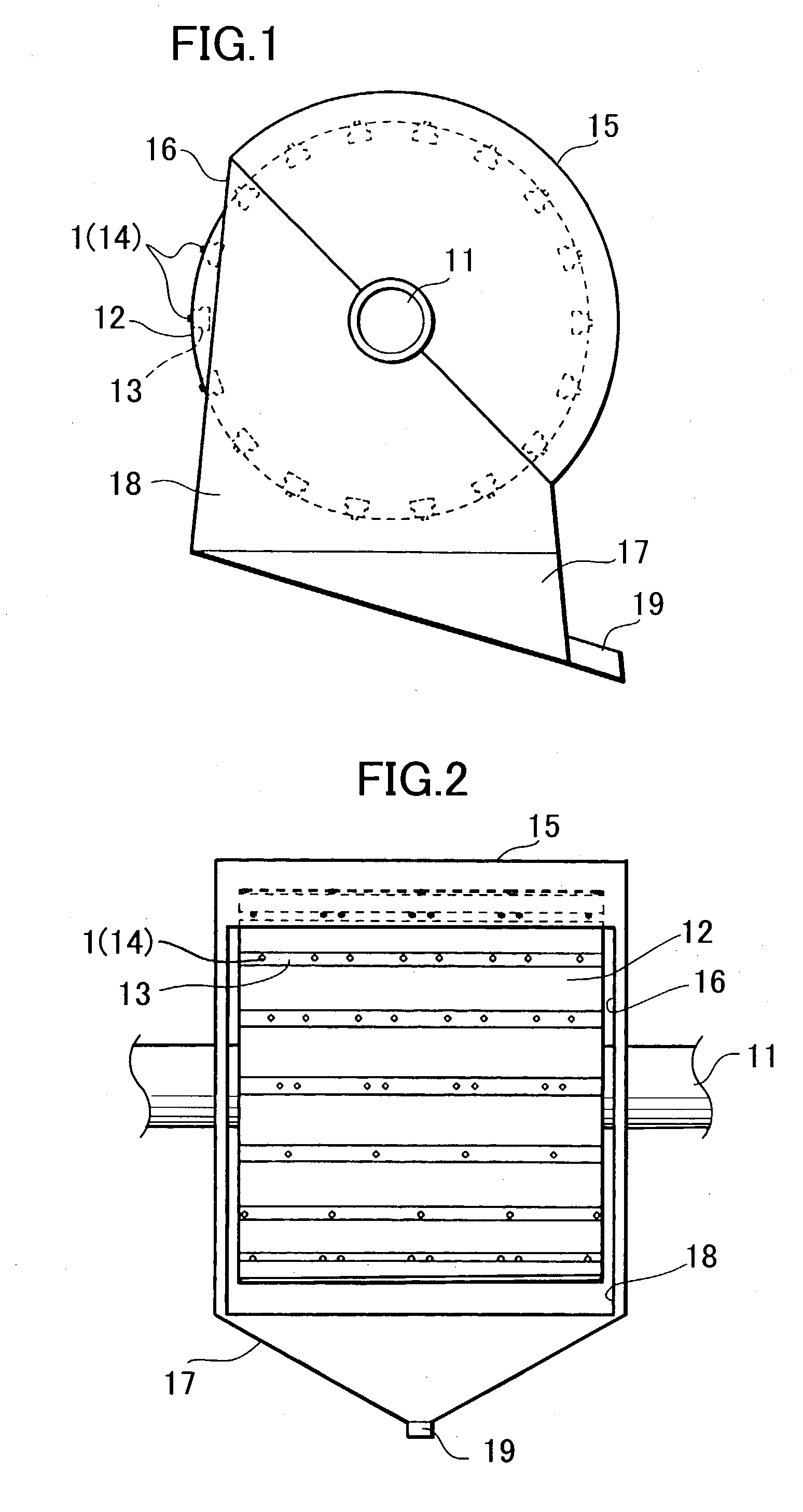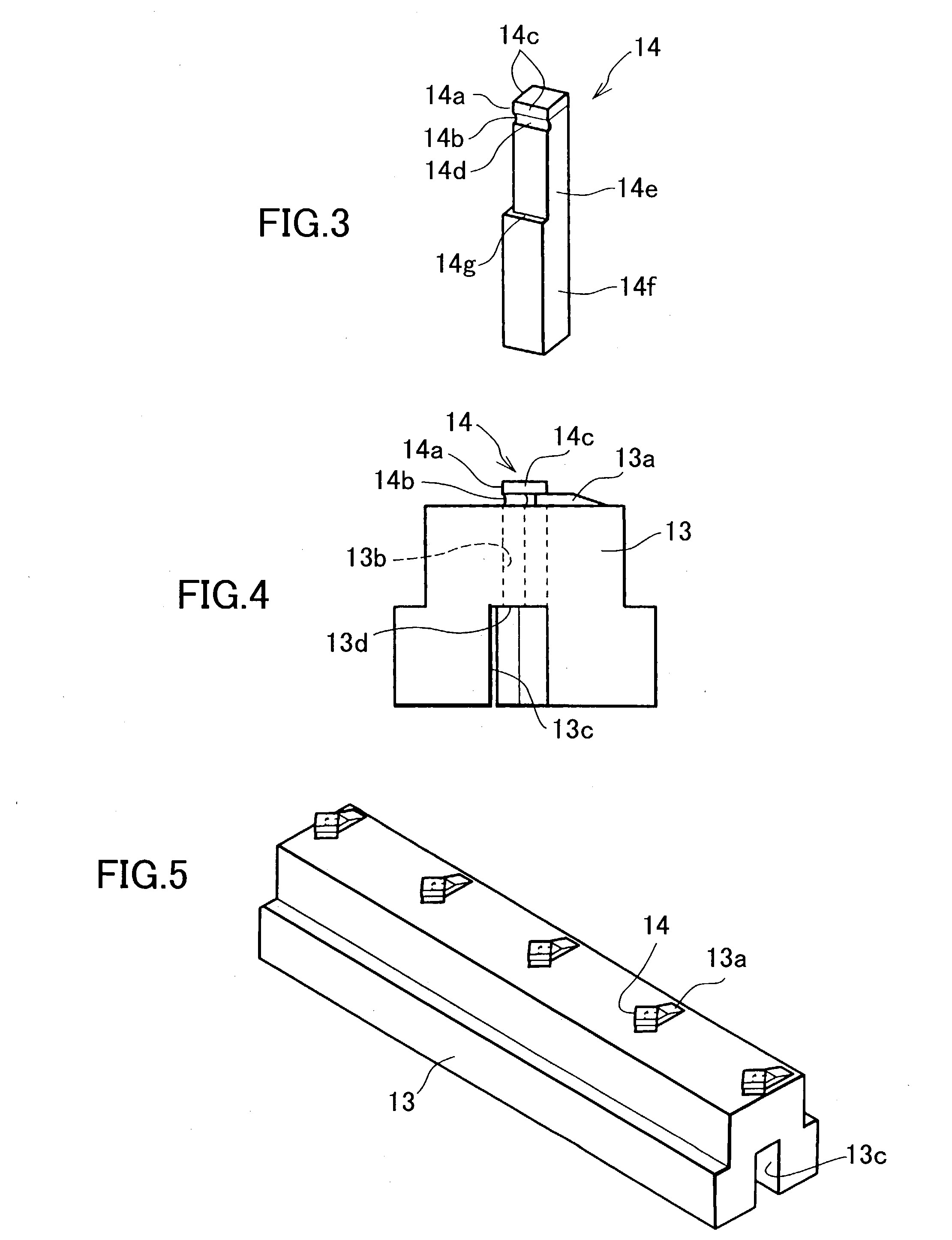Tire recycling system and apparatus used therefor
a recycling system and a technology for tires, applied in the field of tires recycling systems and equipment, can solve the problems of rasp abrasion, lapse blade, increase of cutting load,
- Summary
- Abstract
- Description
- Claims
- Application Information
AI Technical Summary
Problems solved by technology
Method used
Image
Examples
working example
[0067] Various kinds of waste tires were treated by the apparatus of the present invention described above.
[0068] A rotary cylinder 12 of 164 mm in diameter and 98 mm in cutting width (cylinder length) having a plurality of cutting blades 14 on the circumferential surface was used.
[0069] The cutting blade 14 used included three types, having a blade diameter (rhombic diameter) of 1.4 mm, 2.38 mm, and 3.5 mm: a blade height of 1 mm, 1.5 mm and 2 mm and a thickness of the top cutting edge and side cutting edge of 0.3 mm, 0.4 mm, and 0.5 mm. Cutting was conducted at a normal temperature with no countermeasure for heat generation under a rotating speed of the rotary cylinder at 2000 rpm. There was neither heat generation for the blade nor smoking from the rubber and the surface rubber could be cut into fine short rubber strings.
[0070] Further, when the apparatus was used for the cutting of rubber crawler for use in caterpillars which are extremely hard and have been considered so far no...
PUM
| Property | Measurement | Unit |
|---|---|---|
| depth | aaaaa | aaaaa |
| length | aaaaa | aaaaa |
| length | aaaaa | aaaaa |
Abstract
Description
Claims
Application Information
 Login to View More
Login to View More - R&D
- Intellectual Property
- Life Sciences
- Materials
- Tech Scout
- Unparalleled Data Quality
- Higher Quality Content
- 60% Fewer Hallucinations
Browse by: Latest US Patents, China's latest patents, Technical Efficacy Thesaurus, Application Domain, Technology Topic, Popular Technical Reports.
© 2025 PatSnap. All rights reserved.Legal|Privacy policy|Modern Slavery Act Transparency Statement|Sitemap|About US| Contact US: help@patsnap.com



